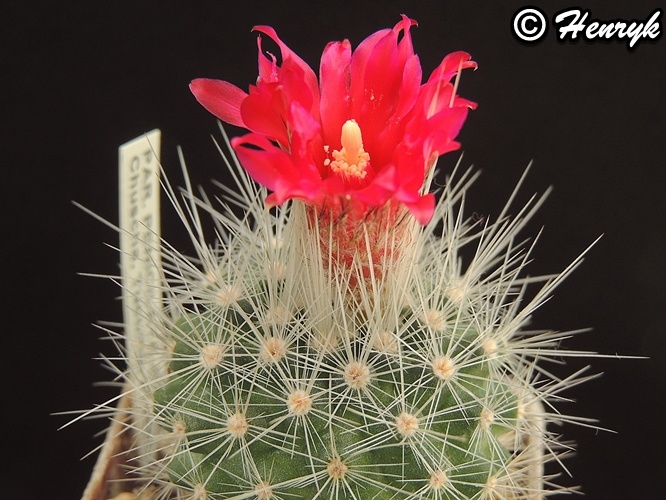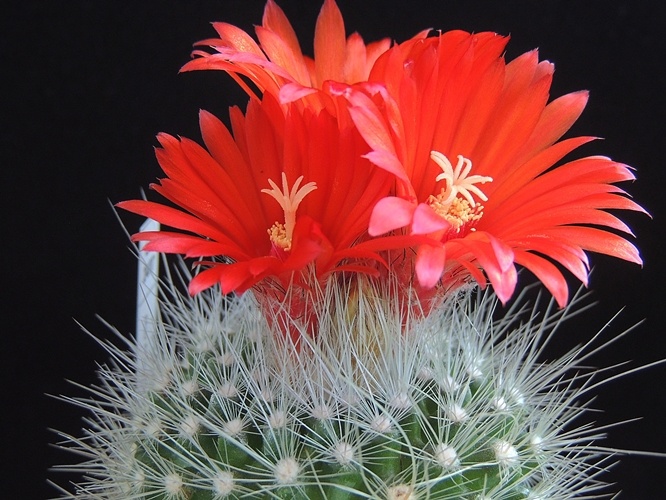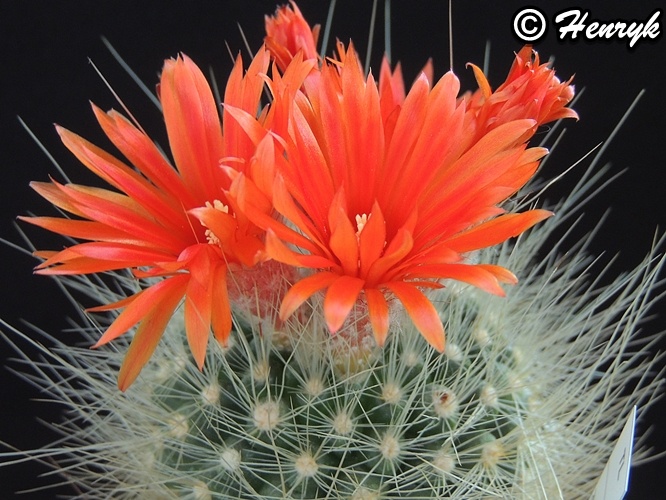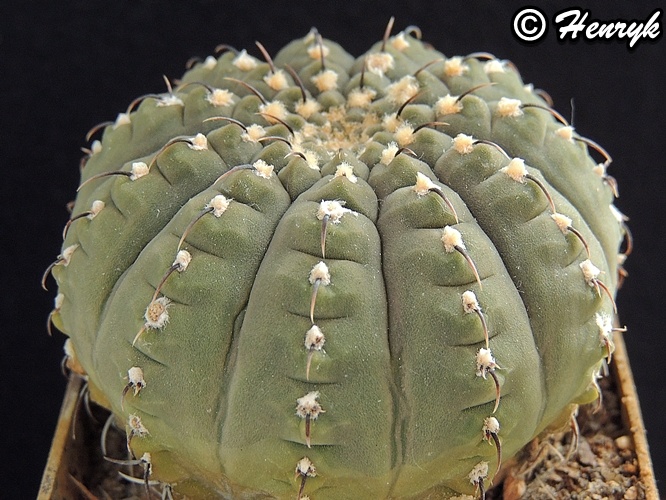Gymnocalycium A Collector's Guide - Pilbeam:
G. piltziorum Schütz, Kakt. u.a. Sukk. 33(7):144 (1982); Hunt (ed.), CITES Cact.
Checklist 67 (1992) (provisionally accepted species). Fig. 74, Plates 92 and 93.
Schütz’s Subgenus Trichomosemineum;
Buxhaum’s Series Quehliana
This lovely species, found by and named for Brigitte and Jorg Piltz of Düren, West
Germany, was fairly recently described, and is represented in most collections only by
seedling plants, which have proved somewhat sensitive when young to over exposure
to sunshine. It has a depressed-globose, solitary body, bluish-green in adult plants,
brownish in young seedlings, dull and with a roughened surface. There are usually
about 12 ribs (10 to 17 are mentioned in the description), with deep and narrow grooves
between them. The 3 to usually 5 radial spines stand erect from the body on first
emerging at the apex, later radiating, closer to the body, strong and stiff, to 25 mm long,
brownish-pink with darker tips. There are no central spines. Flowers are lilac-pink, 7 to
8 cm long, and opening to about 6 cm wide. Fruit is club-shaped, 3 cm long, 1 cm wide,
spindle shaped, grey-green with few rounded scales, lilac-pink-edged. Seed is hemispherical, 1 mm long, 1.2 mm broad, brown, shining with pale margin.
Reported from Argentina, La Rioja in the Sierra Velasco at 1200 m (3940 ft)
altitude.
Collectors’ numbers referred here are P 38; JL 60; HT 88-174.
(Hans and Walter Till in a complex article have recently reduced this species beneath
G. riojense as a subspecies, viz. G. riojense subsp. piltziorum, see comments under G.
riojense.
Przepraszam że posiłkuję się tekstem po angielsku ale nie chcę długo pisać i czegoś przez to nie pomylić. Możesz po prostu wkleić w translator i tyle.
W każdym razie na koniec opisu W. Till uważa że jest to subspecies lub forma G. riojense... Z czym mogę się nawet zgodzić patrząc na swoje rośliny z tego gatunku.

Ale jest to jednak inna roślina!
Ja posługuję się klasyfikacją Pilbeam-a, dla mnie ona jest najbardziej wiarygodna.








